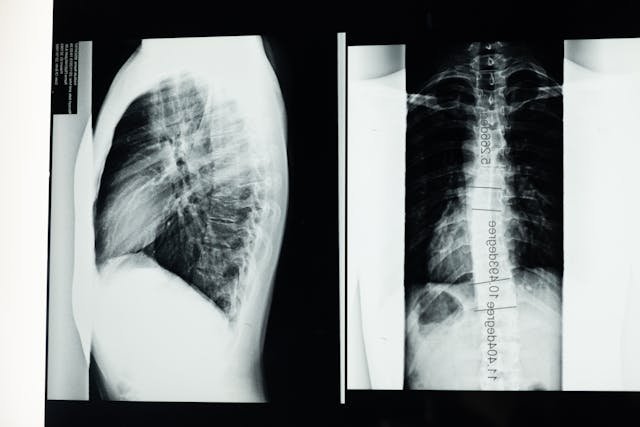In order to improve mobility and relieve chronic pain in patients with severe spinal problems, spine surgery is a crucial step. Anyone thinking about taking this route needs to have a thorough understanding of the diagnosis and recovery process. This article offers a thorough examination of typical spine surgical disorders, available techniques, and surgical preparation. It also discusses the possible dangers and difficulties that may arise, as well as the surgical procedure, healing, and rehabilitation.
Common Conditions Requiring Spine Surgery
Many common illnesses frequently require spine surgery. Herniated discs are painful and nerve-related conditions that arise when the cushioning discs between vertebrae slide out of place. The narrowing of the spinal canal, known as spinal stenosis, can cause excruciating pain and nerve compression. If scoliosis—a curvature of the spine—is severe, surgery may be necessary. Degenerative disc disease is a condition in which the spinal discs degrade over time, causing chronic discomfort and instability. For osteoporosis or trauma-related spinal fractures, surgery may be necessary to stabilize the spine. Learning about these disorders helps you get ready for the trip ahead and helps you determine when spine surgery might be required.
Types of Spine Surgery
Spine surgery comes in a variety of forms, each treating a particular ailment. Small incisions are used during minimally invasive spine surgery (MISS), which shortens recovery times and lowers complications. A spinal fusion unites two or more vertebrae to remove excruciating motion. A laminectomy relieves pressure on the spinal cord by removing a portion of the vertebra. A discectomy releases pressure on nerves by removing a section of a bulging disc. In order to preserve mobility, artificial disc replacement entails swapping out a damaged disc for a synthetic one. Knowing the advantages and disadvantages of each surgical procedure enables you and your physician to determine which course of action is best for your situation.
Preparing for Spine Surgery
For a spine operation to be effective, planning is essential. Start with preoperative consultations and assessments to determine your general state of health. Imaging and diagnostic procedures like CT or MRI scans aid in identifying the problem. Adhere closely to any preoperative instructions given, including any fasting, medication adjustments, and lifestyle modifications. It’s also crucial to mentally and emotionally prepare; knowing what to expect helps you stay upbeat and minimize nervousness. You can feel more at ease by sharing your worries with your surgeon and your loved ones. Additionally, make sure to consult a reputable surgeon with relevant experience and education. If you’re looking for the best spine surgeon in Arizona, consider researching top-rated specialists in that region. You improve your chances of a successful operation and recovery by being well-prepared.
The Spine Surgery Procedure
Your worries are lessened if you are aware of the surgical process. Anesthesia is used at the start of the procedure to make sure you are pain-free and comfortable. The surgical team collaborates to carry out the procedure, which consists of your surgeon, anesthesiologist, and nurses. Depending on the type, the surgery’s length and complexity will vary. For instance, a few hours could be all that is needed for minimally invasive treatments but longer for more complicated surgery like spinal fusions. The staff constantly monitors your vital signs during the whole surgery. Being aware of what to anticipate during the process can make you feel more ready and certain about the experience that lies ahead.
Recovery and Rehabilitation
Recovery and rehabilitation are critical parts of the spine surgery process. You will receive post-operative care and monitoring following surgery to make sure you are safe. Your recovery depends heavily on physical therapy, which gives you back your strength and mobility. These exercises, which are specifically designed for your condition, help you heal. It’s also critical to manage pain and discomfort, and your doctor will provide you with instructions on what medications and pain relief methods to use. Although recovery times vary, you can attain milestones and have a successful outcome by following your doctor’s instructions. Regaining your quality of life will require perseverance and commitment to your rehabilitation strategy.
Risks and Complications
Like any operation, spine surgery has possible risks and problems. You can better prepare when you are aware of these risks. Nerve damage, blood clots, and infections are common side effects. You and your healthcare team must take care of these right away. Appointments for follow-up are crucial to tracking your recuperation and identifying any problems early. There are differences in long-term results, and some individuals may have persistent pain or restricted movement. Nonetheless, a great deal of people experience notable relief and a higher standard of living. You may optimize the results of your spine surgery by being aware of the dangers and exercising caution while recovering.
Conclusion
In conclusion, for many patients, spine surgery can be a life-changing procedure that results in alleviation and an enhanced quality of life. You can approach the procedure more confidently if you know the problems that call for surgery, the kinds of procedures that are accessible, and the necessary preparation. The optimum result is ensured by keeping up regular follow-ups with your healthcare team. You may successfully navigate the process of spine surgery and lead a healthier, more active life with the correct information and assistance.
















